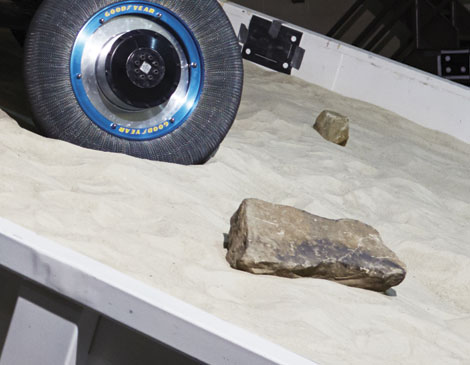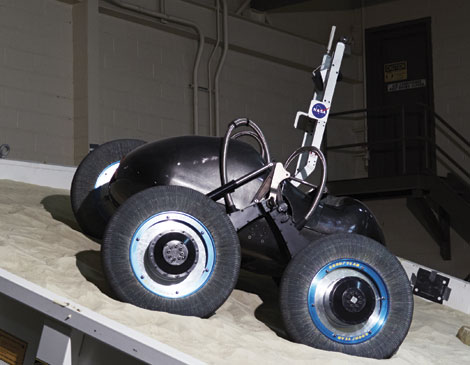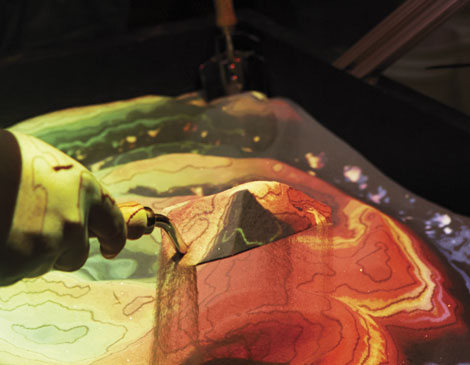There’s a bit of Mars in Cleveland (sort of). Inside the cavernous Simulated Lunar Operations lab at NASA Glenn Research Center, scientists design, manufacture and test tires that can stand up to the demands of moving vehicles around on the moon and Mars. Like an interstellar Goodyear Tire and Rubber Co. plant, the lab’s two bins filled with sand engineered to mimic lunar and Martian soil allow Kyle Johnson and other robotics engineers to figure out how to keep rovers from getting stuck. Johnson fills us in on the lab and its inner workings. 21000 Brookpark Road, Cleveland, nasa.gov

The tires: Johnson and his team are studying a replacement tire for a future Mars mission that utilizes springs — which are woven together into a mesh and shaped into a tire. The lighter weight and flexibility helps the tire cut through the sand. “This type of tire would be capable of [moving] a crude pressurized capsule,” says Johnson. “This would be a tire that could take humans to Mars.”

The sand: The lab’s grayish faux-Martian soil is actually made of tiny hollow microspheres. On a microscopic scale, it actually looks like a Chuck E. Cheese’s ball pit. “It’s very light and very low density,” Johnson says. “If you were to try and drive in that, you’d get stuck almost immediately.”

The rover: The tire prototypes are mounted on a vehicle called the SCARAB. Developed by students at Carnegie Mellon University, it has survived tests on sand dunes in Michigan and volcanic mountains in Hawaii. The vehicle has the ability to stay level like a human climbing a hill. “As you would be walking up a hill, you’re actually leaning into it instead of standing straight up,” says Johnson.

The modeling: A demonstration of the sandboxes sits off to the side with a projector and motion capture device above it. As the hills of sand in the big boxes get shifted by rovers, the projector creates a virtual version of what’s happening. “We’re actually [making] a 3-D map of our vehicle on the surface,” says Johnson. “We use that to measure how the vehicle moves in the soil.”




